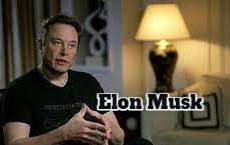News
After a “wet dress rehearsal” as a result of a technical glitch, the starship test flight was rescheduled for April 20
Published
1 year agoon

The new launch window, according to SpaceX, will start on April 20 and last for 62 minutes.After a technical glitch forced a halt to the countdown, SpaceX has rescheduled the first test flight of Starship, the most powerful rocket ever built, designed to send astronauts to the Moon, Mars, and beyond, for Thursday.
A planned liftoff of the massive rocket on Monday was called off less than 10 minutes before the scheduled launch time due to a pressurisation issue in the first-stage booster, according to SpaceX.
The countdown continued in what the private space company called a “wet dress rehearsal,” with the clock stopping with 10 seconds to go, just before the massive engines on the booster were to be ignited.
The planned launch from Starbase, the SpaceX spaceport in Boca Chica, Texas, had been postponed due to a frozen pressure valve, according to SpaceX founder Elon Musk.
Read Also:- CBI Investigates Alleged Foreign Funding Violations at Oxfam India.
Musk tweeted, “Learned a lot today; now offloading propellant; retrying in a few days.”
SpaceX had previously stated that the first flight would be postponed for at least 48 hours in order to recycle the liquid methane and liquid oxygen that power the rocket. Thursday has since been revealed as the new target for takeoff.SpaceX announced on Twitter that the new launch window will begin on Thursday at 8:28am Central Time (13:28 GMT) and last for 62 minutes.
For the first time since the Apollo programme came to an end in 1972, NASA has chosen the Starship spacecraft to transport astronauts to the Moon in late 2025. This mission is known as Artemis III.Starship is made up of a 230-foot-tall first-stage Super Heavy booster rocket and a 164-foot (50-meter) tall spacecraft with room for crew and cargo.
The 33 Raptor engines on the first-stage booster were successfully test-fired by SpaceX in February, but the Starship spacecraft and the Super Heavy rocket have never flown together.
Their combined performance will be evaluated during the integrated test flight.
Prior to the launch, Musk had issued a delay warning.
He previously said, “It’s a very risky flight.” It’s the first launch of a huge, intricate rocket.”There’s a million ways this rocket could fail,” Musk said. “We’ll be very cautious, and if we see anything that causes us concern, we’ll postpone.”
planet-wide species
In November 2024, NASA will send astronauts to the moon on its own, using the Space Launch System (SLS), a heavy rocket that has been in development for more than ten years.
Starship can launch a payload weighing more than 100 metric tonnes into orbit and is both bigger and more powerful than SLS.More than twice as much thrust as the Saturn V rockets used to launch the Apollo astronauts to the Moon, it produces 17 million pounds of thrust.
Approximately three minutes after launch, the Super Heavy booster will separate from Starship and splash down in the Gulf of Mexico as part of the integrated test flight.
The six-engined Starship will continue to ascend to a height of close to 150 miles before making a nearly complete rotation of the planet and splashing down in the Pacific Ocean about 90 minutes after launch.If it enters orbit, Musk declared, “that’s a massive success.”
“If we get far enough away from the launchpad before something goes wrong, then I think I would consider that to be a success,” he said. Don’t blow up the launchpad, please.
SpaceX envisions eventually launching a Starship into orbit and then refuelling it with another Starship to continue on its journey to Mars or beyond.
Musk stated that the goal is to make Starship reusable and reduce the cost per flight to a few million dollars.
“In the long run — in the long run meaning, I don’t know, two or three years — we should achieve full and rapid reusability,” he said.
The ultimate goal is to establish bases on the Moon and Mars, putting humans on the “path to being a multi-planet civilization,” according to Musk.
“We are at a point in history where it is possible to become a multi-planet species,” he said. “That is our intention. “I believe we have a chance.”
You may like
-


Twitter’s paywall system has been removed from its application programming interface
-


Q1 2023, Netflix added 1.75 million new subscribers. Ad-Supported Tier Following Crackdown on Password Sharing
-


Elon Musk will develop ‘truth-seeking’ AI to compete with Google and Microsoft in the AI race
-


Sundar Pichai, the CEO of Google, alluded to more job cuts at the tech giant
-


Truecaller Launches Live Caller ID for iPhone Users
-


Prior to launch, Asus ROG Phone 7 and ROG Phone 7 Ultimate renders, specifications, and pricing were leaked

